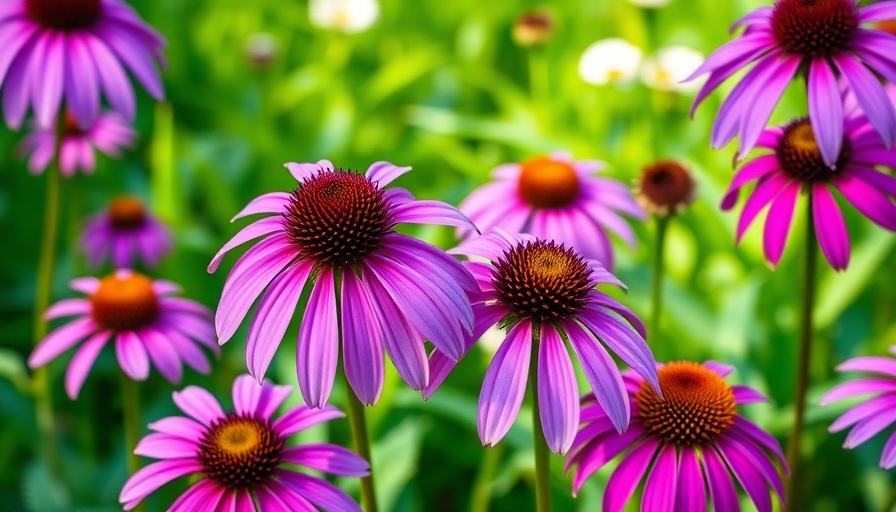
Why Coneflowers are a Must-Have for Urban Gardening
Coneflowers, or Echinacea, have transitioned from their origins as simple prairie wildflowers to vital components of contemporary gardens. These vibrant perennials are not only visually captivating but also play essential roles in attracting pollinators and contributing to biodiversity. For those living in urban or suburban settings, where garden space is limited, the adaptability of coneflowers to container gardening opens a world of opportunities to integrate these remarkable plants into home landscapes.
Choosing the Right Container: Size Matters
When cultivating coneflowers in pots, the most significant factor to consider is the size of the container. These plants boast either deep taproots or fibrous root systems, depending on the species. The most common species, E. purpurea, has a fibrous root that thrives in a pot that is at least 12 inches deep and wide. In contrast, if you’re working with deeper-rooted varieties such as E. pallida or E. angustifolia, opt for 24 inches deep and 12 inches wide to accommodate their growth. This approach not only ensures ample room for roots to develop but also enhances stability for the mature plant, preventing topple-over from wind or rain.
Soil Selection: The Key to Thriving Plants
Good soil is essential for healthy coneflowers. Choose well-draining soil enriched with organic matter. A mix tailored for container gardening, often available at local garden centers, can provide the necessary nutrients while ensuring proper drainage. Consider amending your potting mix with perlite or vermiculite to enhance aeration and drainage. Proper soil will reduce the risk of root rot and promote a robust root system, setting your coneflowers up for success.
Optimal Location: Finding the Right Spot
Coneflowers crave sunlight, so positioning your container in a location that receives at least six hours of direct sun each day is crucial. A sunny balcony, patio, or even a bright window will create the ideal environment for these blooms. Pay attention to the microclimates around your home; areas that stay warmer during the evening can enhance flower production. Keep in mind that while coneflowers tolerate heat, they may require protection in extreme conditions, particularly in urban settings where temperatures can soar.
Choosing Species and Cultivars: Which is Right for You?
With various species and cultivars to choose from, selecting the right coneflower for your container garden can be exciting. Echinacea purpurea is the most popular, known for its striking pink petals and resilience. Other stunning varieties include 'Magnus' with its vibrant red blooms and 'White Swan,' which adds a unique touch with its pure white flowers. Incorporating multiple species can provide a prolonged flowering season and visual interest throughout the summer months.
Maintenance Tips: Keep Your Coneflowers Flourishing
Once planted, your coneflowers will require regular maintenance to flourish. Ensure that you water your plants deeply but infrequently—this encourages deep root growth while preventing over-watering. Fertilize sparingly; a slow-release fertilizer applied in early spring can promote healthy growth without overwhelming your plants. Deadheading spent flowers will stimulate further blooming and ensure a neat appearance throughout the growing season.
Partnering with Other Plants: Creating a Beautiful Arrangement
Coneflowers make excellent companions for a variety of other plants, such as bee balm, salvia, and phlox. When creating a mixed container, it’s essential to select companion plants with similar water and light requirements. This approach not only maximizes visual appeal but also supports pollinator populations, making your container a thriving habitat for beneficial insects.
Inspiration to Cultivate Your Patio Garden
Bringing coneflowers into your life can also provide a great sense of accomplishment and connection to nature. As urban dwellers carve out green spaces amidst concrete surroundings, using containers to grow these hardy blooms acts as a reminder of the resilience of nature and the possibility of growth, even within limited spaces. For beginners, starting with coneflowers can be a safe bet as these plants are generally pest-resistant and adaptable.
Get Started: Your Container Garden Awaits!
Now that you have the essential information to grow coneflowers in containers, it's time to take action. Whether you're a seasoned gardener or a newcomer, planting coneflowers can enhance your outdoor space while fostering a deeper connection to nature. Embrace this opportunity to start your container gardening journey today—bring beauty and life to your patio!
 Add Row
Add Row  Add
Add 




 Add Row
Add Row  Add
Add 

Write A Comment